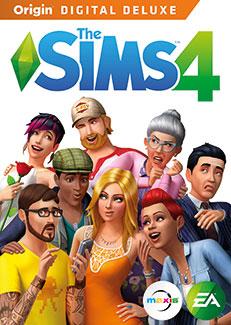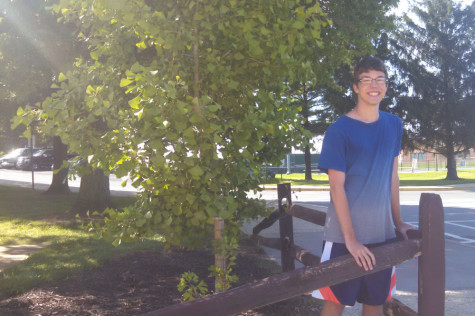
The Sims 4 was released on September 2, 2014, and is getting mixed reviews from fans. Although it is the sequel to a major franchise, not everyone is pleased with the removal of features that made the game spectacular.
Some features that have been removed from the game are the creations of pools and swimwear, toddlers, an open world to roam around in, construction of basements, and many more. The one that disappoints long-term fans the most are the removal of pools.
Whether it is being able to drown your Sims, have a pool party, or just to have it there for decoration, pools have been a feature of The Sims series since The Sims 1, released on February 4, 2000. It has angered many fans that a feature that is so iconic to The Sims series is abruptly removed from the game.
Despite all of the complaints from fans, EA is still making big bucks from The Sims 4. The new additions to the game are contributing to the sales, and preorders from fans who thought the game would be great are making a huge impact on the game’s success.
The new Create-a-Sim in The Sims 4 is probably the best feature in the game, alongside the new Build Mode tools. As opposed to previous instalments of the game, you can now fully customize your Sims by clicking and dragging the body part you want to adjust. Sliders are no longer a feature in Create-a-Sim, except for two which are used for muscle size and weight.
The Sims 3 added a great new feature to the series called Create-a-Style. In Create-a-Style, you could create any color for anything you want; but not anymore. In The Sims 4, EA removed this feature because they were worried it would cause “performance issues.” Even though that was removed, they replaced it for a color palette of a few colors and designs for certain items, keeping a little bit of color customization.
Along with Create-a-Sim, the new Build Mode is simplistic and easy for anyone to use. New features for build mode include moving whole rooms, creating rounded decks, adding roof décor, and more. Of course, with this many improvements, there are going to be casualties.
One feature that was thrown to the curb is having a house on the ground and one on a foundation. It may not seem like such a big loss, but it is to some fans. Do you want a garage that you can park your car in, but also want a house on a foundation? You can’t do that. In fact, there are not even cars since there is no open world. Basements, which were available in The Sims 3, were removed as well. The new engine used for The Sims 4 doesn’t support underground, and that upset some fans.
Even with all of these sacrifices to make The Sims 4 great, there has to be a silver lining; the new emotions and multitasking.
Before, in Sims games, if your Sim was eating his or her mac and cheese on the couch and you wanted them to talk to their friend at the same time, you couldn’t do that. But now, in The Sims 4, your Sim can eat, talk to their friend, and surf the web on their phone all at the same time. This feature allows more actions to be done all at the same time.
As for emotions, your Sim can have up to 15 different emotions: happy, sad, angry, embarrassed, dazed, bored, tense, energized, focused, confident, flirty, cranky, playful, fine, and inspired. The different traits each Sim has can affect their emotional state, along with the moodlets they gain from doing various activities.
In the town the Sims live in, which can be Oasis Springs or Willow Creek, there are four commercial lots and a few residential lots to explore, and you can travel to either neighborhood at any time you want; however, unlike The Sims 3, there is no open world to explore.
Going back to The Sims 1 style of getting places and going to work, EA has taken a huge step backwards in terms of getting around town. No carpool shows up to pick up your Sims for work, and you have to go through a loading screen to go anywhere around town. Loading times have been reduced greatly, which is why some fans don’t find it as much of an issue, but other fans think of this as too much of a downgrade.
In terms of gameplay, it works as any other Sims game: you create your household, move them into a lot, create their home, then play. It is almost exactly the same as The Sims 3 gameplay, but with emotions. The Sims 4, because of its engine, runs a lot smoother than the previous game, dropping no frames per second (fps) almost the entire time.
Most fans say The Sims 4 is a downgrade, and the reasons are justifiable. It has taken a huge step back from The Sims 3 in terms of features, although in terms of graphics, it has improved a lot.
The graphics are another split-opinion feature of the game. Some believe it is a step back to The Sims 2 in that it has a cartoony feel; whereas, others believe they look better than the more realistic graphics of The Sims 3.
EA made the graphics this way so that it is easier run the game on any computer, except Macs.
Sims games started being released on Macintosh computers since The Sims 2; however, there is not going to be any Mac version of The Sims 4 at all, at least for now. EA has said no word about a Mac version, which leads fans to believe that there will be no Mac version for The Sims 4 for a while or at all.
Despite the spiteful reviews from long-term fans, The Sims 4 is a good game at the least. There are bugs, which are expected in a base game. Some are more apparent than others, like emotions not changing, conversation meters remaining on screen after a conversation is finished, Sims disregarding commands, and many more.
Bugs are not what make the game bad; it’s the countless amounts of sacrifices made to make this game a success.
Priced at for $60.00 for the base game, so many features have been removed that it is just not worth it to some fans unless you are curious about the game or would enjoy the new improvements and don’t mind the removals.
At the end of the day, it isn’t a bad game. It certainly isn’t great, but it makes the cut. If you are planning on buying The Sims 4, it would be best if you wait a while till prices go down, or buy The Sims 3 while you’re still deciding.












